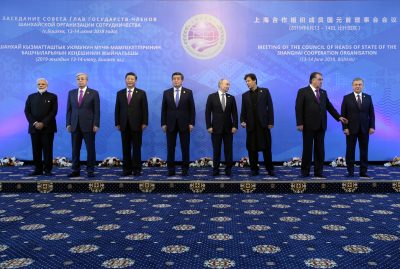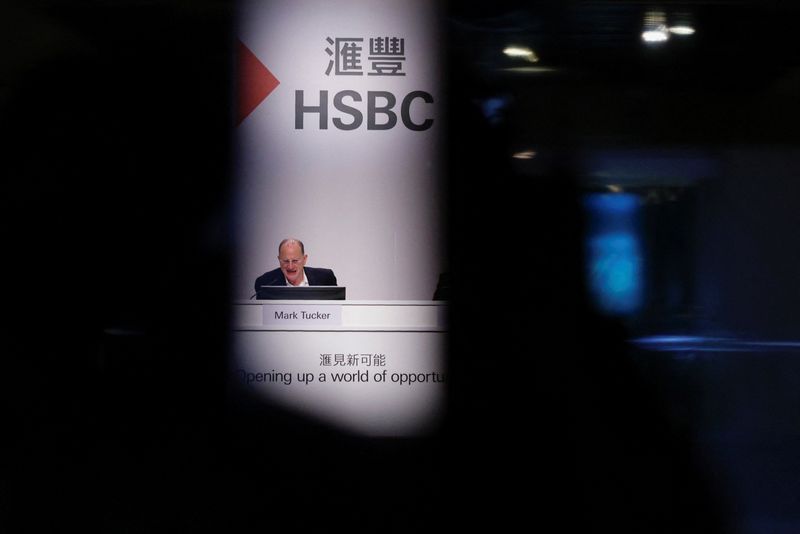China
Cooperation grows in Central Asia

Author: Kirill Nourzhanov, ANU
The main political trend in Central Asia for 2019 was the steady improvement of interstate relations. This was primarily driven by Uzbekistan’s desire to repair relations with its neighbours. The country’s President Shavkat Mirziyoyev noted ‘our rapprochement and expansion of cooperation in the region is a demanded and irreversible process’.
Border delimitation and demarcation proceeded apace including a historic land swap between Kyrgyzstan and Uzbekistan. But despite the heads of state’s emphasis on peace and good neighbourly relations, residents of the adjoining areas of Kyrgyzstan and Tajikistan in the Ferghana Valley repeatedly clashed over land and water use. The second annual meeting of Central Asian leaders in November 2019 noted a higher level of interaction and mapped out the potential for effective regional collaboration on issues such as trade, transport connectivity and renewable energy.
In March 2019, Kazakhstan’s president Nursultan Nazarbayev resigned at 78 after nearly 30 years at the country’s helm. In a move suggestive of a Singaporean model of managed political succession, he retained substantial formal and informal power as head of the Security Council and a post-independence nation builder. Nazarbayev’s handpicked successor, Kassym-Jomart Tokayev, won the presidential election of June 2019 comfortably, campaigning on the platform of safeguarding his predecessor’s legacy.
Towards the end of 2019 signs of tension between Tokayev and Nazarbayev began to emerge over executive personnel appointments that prompted speculation about the viability of the ‘Kazakh tandem’ and elite in-fighting exacerbated by possible popular protests. But these fears seem unfounded at present — unless something extraordinary happens the transit of power in Kazakhstan is likely to proceed in an unhurried and orderly fashion.
In Kyrgyzstan the rift between the incumbent head of state and his predecessor reached crisis proportions. In the context of a corruption investigation, President Sooronbay Jeenbekov stripped his former mentor and patron, Almazbek Atambayev, of immunity and had him and senior figures from his administration arrested. Atambayev resisted arrest and was subsequently accused of plotting a coup.
Both sides of the conflict appealed to Moscow for support. Russian President Vladimir Putin ended up calling on the Kyrgyz people to rally around Jeenbekov in the name of political stability and state development. While Jeenbekov’s position appears to be consolidated, the 2020 parliamentary election campaign may provide his opponents with an opportunity to mobilise support and challenge his government through legitimate means.
Turkmenistan continued to grapple with a severe economic crisis, hyperinflation and widespread food shortages. Its reclusive President, Gurbanguly Berdymuhamedov, resorted to a frantic reorganisation of the officialdom to compensate for years of poor decisions and grotesque mismanagement. The former head of the presidential security apparatus and the long-serving interior minister were thrown in jail and then paraded on state TV confessing to heinous crimes, causing observers to talk about an averted palace coup.
Increasing volumes and value of natural gas exported to China may throw the regime a lifeline but also increase its already substantial dependence on Beijing. In the meantime, alternative pipeline projects have stalled. The southward-bound TAPI gas route that was supposed to become operational in 2020 may not be realised until after 2030, if at all, according to the Asian Development Bank’s prognosis.
Security threats from Afghanistan were salient on Tajikistan’s political agenda. In early 2019, President Emomali Rahmon spoke about the ‘escalating threats of terrorism, extremism and other contemporary menaces’ emanating from the neighbouring country. His security officials reported constant clashes on the border with criminal and terrorist groups and warned that a major cross-border incursion was imminent. This warning seemed to have come true in November 2019 when a group of militants traversed the frontier deep into Tajik territory and attacked a checkpoint on the Tajikistan–Uzbekistan border. Islamic State claimed responsibility for the raid.
While there are question marks about the true extent of the Afghanistan threat, which may be exaggerated by Dushanbe, Russia and China treat the security situation on the ground seriously. In 2019, the Kremlin redoubled its efforts to enhance its southern ally’s…
Business
HSBC Chairman to Head Key UK Business Delegation to China

HSBC Chairman Mark Tucker will lead a UK business delegation to China next month to boost trade and investment, amid concerns over national security and improving UK-China relations.
HSBC Chairman Leads UK Delegation to China
HSBC Chairman Mark Tucker will lead a pivotal British business delegation to China next month, marking the first significant visit since 2018. The trip aims to enhance Chinese investment in the UK, guided by Chancellor Rachel Reeves. Tucker, a seasoned financier with extensive Asia experience, is regarded as essential in resetting UK-China relations.
Reviving Economic Dialogue
Tucker will accompany senior bankers in seeking to rejuvenate trade, specifically focusing on financial services. Although there are apprehensions among some UK lawmakers regarding national security threats posed by closer ties to Beijing, the UK Treasury spokesperson confirmed Chancellor Reeves’ upcoming discussions on economic cooperation in Beijing.
A Shift in UK-China Relations
Since suspending most dialogues following China’s imposition of a national security law in Hong Kong, UK-China relations have soured. Nevertheless, the Labour government is prioritizing improved ties with China, emphasizing investment opportunities. Reeves asserts the necessity of a pragmatic approach to benefitting national interests amid ongoing concerns voiced by some lawmakers about security risks.
Source : HSBC Chairman to lead pivotal UK business delegation to China
China
China’s November 2024 Economy: Navigating Mixed Signals and Ongoing Challenges

In November 2024, China’s economy exhibited mixed results: industrial production rose by 5.4%, while retail sales grew only 3%, below forecasts. Fixed asset investment also faltered. Policymakers are anticipated to introduce measures to stimulate domestic demand and combat deflation.
China’s economy showed mixed performance in November 2024, with industrial production and exports showing resilience, while retail sales and fixed asset investment underperformed, amid ongoing challenges in the property sector. Policymakers are expected to implement targeted fiscal and monetary measures to boost domestic demand and address deflationary pressures.
The National Bureau of Statistics (NBS) has released China’s economy data for November 2024, revealing a mixed performance across key indicators. Retail sales grew by 3 percent year-on-year, a significant slowdown from October’s 4.8 percent growth and well below the 4.6 percent forecast. Industrial production, however, showed resilience, rising by 5.4 percent and exceeding expectations of 5.3 percent growth.
The property sector continued to drag on the broader economy, with real estate investment contracting by 10.4 percent for the January-to-November period, further highlighting the challenges in stabilizing the sector. Fixed asset investment also fell short of expectations, growing by 3.3 percent year-to-date, down from 3.4 percent in October.
In November, China’s industrial value added (IVA) grew by 5.4 percent year-on-year (YoY), slightly accelerating from the 5.3 percent recorded in October. This modest improvement reflects continued recovery in key industries, supported by recent stimulus measures aimed at stabilizing the economy.
The manufacturing sector led the growth, expanding by 6.0 percent YoY, while the power, heat, gas, and water production and supply sector grew by 1.6 percent. The mining industry posted a 4.2 percent YoY increase. Notably, advanced industries outpaced overall growth, with equipment manufacturing and high-tech manufacturing rising by 7.6 percent and 7.8 percent YoY, respectively, underscoring the resilience of China’s innovation-driven sectors.
Key product categories showed robust output gains in November:
From January to November, IVA increased by 5.8 percent YoY, maintaining steady growth over the year despite headwinds from a slowing property market and external uncertainties.
| This article was first published by China Briefing , which is produced by Dezan Shira & Associates. The firm assists foreign investors throughout Asia from offices across the world, including in in China, Hong Kong, Vietnam, Singapore, and India . Readers may write to info@dezshira.com for more support. |
Read the rest of the original article.
China
Ukraine war: 10% of Chinese people are willing to boycott Russian goods over invasion – new study

Since Russia’s 2022 invasion of Ukraine, some Chinese citizens express dissent through potential boycotts of Russian goods, reflecting a complex relationship despite government support for Russia.
Since Russia invaded Ukraine in 2022, the Chinese government has been criticised for its refusal to condemn the war. In 2024, the economic and diplomatic relationship between the two nations appears stronger than ever.
Because of strict censorship and repression imposed by the Chinese Communist Party (CCP), it is difficult to know the extent to which the general public shares their government’s support of Putin’s regime. But a newly published study I carried out with colleagues found that more than 10% of Chinese people surveyed were willing to boycott Russian goods over the war in Ukraine.
This is a surprisingly large figure, especially since existing surveys indicate that Chinese people hold a broadly positive view of their neighbour. We used a representative sample of 3,029 Chinese citizens for this research, to dig into public attitudes to Russia. The survey was done in 2022 after the Ukraine invasion.
We were aware that due to widespread censorship, our participants might not be willing to give honest answers to questions about Russia’s actions in Ukraine. They might also not feel safe to do that in a regime where disagreement with the CCP’s position is often met with harsh punishment. This is why we asked them to tell us if they would be willing to boycott Russian products currently sold in China.
We felt this question was a good indicator of how much the participants disapproved of Russian foreign policy in Ukraine. More importantly, we were also curious to find out whether Chinese citizens would be willing to take direct political action to punish Russia economically for its aggressive behaviour.
In our study, we split respondents into the three different ideological groups in China: “liberals”, who support the free market and oppose authoritarianism; “the new left”, who sympathise with the policies pursued in China under Mao Zedong; and “neo-authoritarians”, who believe the Russian-Ukrainian conflict is an extension of the rivalry between authoritarian China and the liberal United States. These groups were based on the main political beliefs in China.
We found that liberals were most likely to say they were willing to boycott Russian products. Liberals believe that China should work with, rather than against, western democracies. They also place a high value on human rights and democratic freedoms. Because of their beliefs, they are likely to think that Russia’s actions against Ukraine were unprovoked, aggressive and disproportional.
Chinese and Russian economic and diplomatic relations seem closer than ever in 2024.
American Photo Archive/Alamy
The new left and neo-authoritarians we surveyed were more supportive of Russian products. The new left see Russia as a close ally and believe that Nato’s expansion in eastern Europe was a form of aggression. Neo-authoritarians, on the other hand, believe that supporting Russia, an allied autocracy, is in China’s best interest.
Boycotting Russian goods
Asking Chinese participants if they are willing to boycott Russian products might seem like a simple matter of consumer preferences. However, our study reveals a great deal about the way in which regular citizens can express controversial political beliefs in a repressive authoritarian regime.
Boycotting products of certain companies has long been studied in the west as a form of unconventional political action that helps people express their beliefs. However, in the west, boycotting certain products is simply one of many ways people are able to take political action. In a country such as China, boycotting a Russian product might often be the only safe way to express disagreement with the country’s actions.
This is because citizens do not have to tell others they chose not to buy a product, and their actions are unlikely to attract the attention of the authorities.
Since Russian goods are readily available to Chinese consumers and China is encouraging more Russian exports to reach its market, the Russian economy could be significantly affected by an organised boycott campaign in China. The considerable level of support for a boycott expressed by some of our participants, as well as previous acts of solidarity with Ukraine in China, suggest that such a campaign could already be taking place in the country.
This could harm Russia because it regularly exports a number of different products such as meat, chocolate, tea and wine to China. These goods made up 5.1% of China’s total imports in 2023 – and this figure is likely to increase if Russia becomes more isolated from the west, and therefore more dependent on China for its trade.
While 5.1% of the Chinese market might seem like a low figure, China is home to over 1.4 billion people. In this context, even a small boycott could result in a serious loss to Russian companies.
Our research shows that Chinese citizens don’t always support the official position of the communist party. It also shows that many people there will express even the most unpopular political opinions – if they can find a safe way to do it.
This article is republished from The Conversation under a Creative Commons license. Read the original article.






